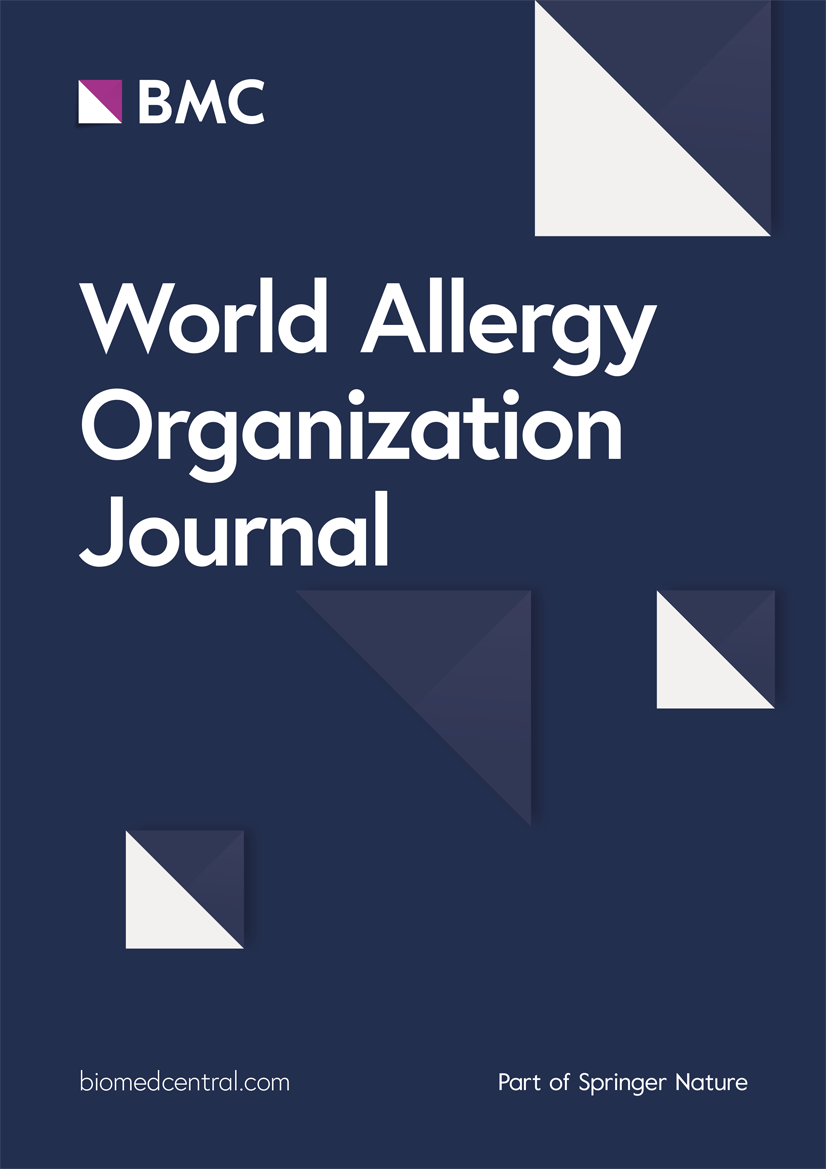Differential expression of eicosanoid pathways after whole blood stimulation in asthma patients
IF 4.3
2区 医学
Q2 ALLERGY
引用次数: 0
Abstract
Objectives
Asthma is a heterogeneous disease regarding its pathophysiology, clinical symptoms, and response to treatment. Eicosanoids are important inflammatory mediators, able to either promote or attenuate the underlying chronic airway inflammation. We compared eicosanoid expression patterns in the blood circulation and in stimulated blood leukocytes of asthma patients to identify differences in eicosanoid release which may be related to airway inflammation.
Methods
Blood was collected from 198 adult asthmatic patients and 63 healthy controls, participating in the German Center for Lung Research (DZL) ALLIANCE cohort. Eicosanoid release from leukocytes was analyzed using heparinized whole blood after in vitro stimulation with zymosan. Additionally, circulating eicosanoids were measured directly from ethylenediaminetetraacetic acid (EDTA) plasma. Eicosanoids were extracted via solid phase extraction and quantified by high-performance-liquid-chromatography-tandem-mass-spectrometry (HPLC-MS2).
Results
Eicosanoid levels were low in blood circulation with no significant differences between asthmatics and controls, except for leukotriene E4 (LTE4) which was slightly elevated in asthmatics. After in vitro stimulation we observed an inhibition of prostaglandin and thromboxane biosynthesis only in patients with severe asthma which was related to the regular use of systemic corticosteroids. In contrast, a significant increase was shown for formation of the 5-Lipoxygenase (5-LOX) product LTE4 in steroid-naïve asthmatics with moderate as well as severe disease severity but not in subjects with systemic steroid treatment. Furthermore 15-Hydorxyeicosatetraenoic acid (15-HETE) production was elevated in asthmatic patients with mild-to-moderate disease activity but dropped down in severe asthmatics.
Conclusions
Profiling of eicosanoid production in stimulated whole blood samples showed a specific biosynthesis pattern of asthmatic patients, which is influenced by the use of systemic corticosteroids.
哮喘患者全血刺激后类二十烷酸途径的差异表达
目的哮喘在病理生理、临床症状和治疗反应方面是一种异质性疾病。类二十烷酸是重要的炎症介质,能够促进或减轻潜在的慢性气道炎症。我们比较了哮喘患者血液循环和受刺激的血液白细胞中类二十烷酸的表达模式,以确定可能与气道炎症有关的类二十烷酸释放的差异。方法收集198例成年哮喘患者和63例健康对照者的血液,参与德国肺研究中心(DZL)联盟队列研究。用肝素化全血对体外刺激后白细胞的类二十烷酸释放量进行了分析。此外,循环二十烷酸直接从乙二胺四乙酸(EDTA)血浆中测量。采用固相萃取法提取二十烷类化合物,采用高效液相色谱-串联质谱法(HPLC-MS2)定量。结果除白三烯E4 (LTE4)在哮喘组略有升高外,哮喘组血循环中类二十烷含量较低,与对照组无显著差异。体外刺激后,我们观察到只有在严重哮喘患者中前列腺素和凝血素的生物合成受到抑制,这与经常使用全身皮质类固醇有关。相反,5-脂氧合酶(5-LOX)产物LTE4的形成在steroid-naïve中度和重度哮喘患者中有显著增加,但在接受全身类固醇治疗的受试者中没有。此外,15-羟基二十碳四烯酸(15-HETE)在轻度至中度疾病活动度的哮喘患者中升高,而在重度哮喘患者中下降。结论受刺激的全血样本中类二十烷酸的生成谱显示哮喘患者具有一种特定的生物合成模式,这种模式受全身使用皮质类固醇的影响。
本文章由计算机程序翻译,如有差异,请以英文原文为准。
求助全文
约1分钟内获得全文
求助全文
来源期刊

World Allergy Organization Journal
Immunology and Microbiology-Immunology
CiteScore
9.10
自引率
5.90%
发文量
91
审稿时长
9 weeks
期刊介绍:
The official pubication of the World Allergy Organization, the World Allergy Organization Journal (WAOjournal) publishes original mechanistic, translational, and clinical research on the topics of allergy, asthma, anaphylaxis, and clincial immunology, as well as reviews, guidelines, and position papers that contribute to the improvement of patient care. WAOjournal publishes research on the growth of allergy prevalence within the scope of single countries, country comparisons, and practical global issues and regulations, or threats to the allergy specialty. The Journal invites the submissions of all authors interested in publishing on current global problems in allergy, asthma, anaphylaxis, and immunology. Of particular interest are the immunological consequences of climate change and the subsequent systematic transformations in food habits and their consequences for the allergy/immunology discipline.
 求助内容:
求助内容: 应助结果提醒方式:
应助结果提醒方式:


